 Nuclear power is a cost effective and commercially viable energy resource. One of the cheapest sources of energy being produced in India today is by a nuclear power plant (TAPS-1&2: 92 paise/unit). Electricity generated by Kudankulam nuclear power unit -1, which is the latest addition to our nuclear fleet, sells for a little over Rs. 3 per unit, which is very competitive. Our nuclear power operator NPCIL is a AAA rated company making commercial profit. All this gives lie to any assertion that nuclear power in India is not viable.
Nuclear power is a cost effective and commercially viable energy resource. One of the cheapest sources of energy being produced in India today is by a nuclear power plant (TAPS-1&2: 92 paise/unit). Electricity generated by Kudankulam nuclear power unit -1, which is the latest addition to our nuclear fleet, sells for a little over Rs. 3 per unit, which is very competitive. Our nuclear power operator NPCIL is a AAA rated company making commercial profit. All this gives lie to any assertion that nuclear power in India is not viable.
Nuclear Power Myths and Facts
MYTH 1: Nuclear Power is expensive and unaffordable
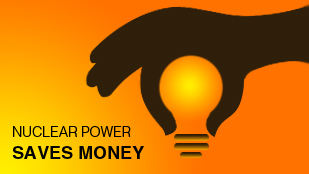 Nuclear power offers significant cost advantages, considering the high capacity factors (averaging nearly 80% or even more) of nuclear power plants and their exceptionally long life (over 60 years for new generation plants). In fact, the cost of nuclear power in terms of amount of total electricity generated actually turns out to be less per unit installed capacity even compared to some of the renewables, like solar power. View (227KB) for an illustrative comparison
Nuclear power offers significant cost advantages, considering the high capacity factors (averaging nearly 80% or even more) of nuclear power plants and their exceptionally long life (over 60 years for new generation plants). In fact, the cost of nuclear power in terms of amount of total electricity generated actually turns out to be less per unit installed capacity even compared to some of the renewables, like solar power. View (227KB) for an illustrative comparison
Moving forward, the consideration of cost viability remains central to our decision to expand India’s civil nuclear power programme. This includes our discussions with international partners for upcoming and future nuclear power projects. Our decision to buy any foreign-build reactor will be firmly premised on ascertaining the cost viability of the project as well as the soundness and safety of the relevant technology. That is why, in addition to ascertaining the safety features, we also place utmost emphasis on project cost and unit energy cost in all our negotiations for foreign-built reactors, so as to ensure that electricity generated by these nuclear power plants will remain viable vis-à-vis other competitive resources. There is no other alternative to such a scrutiny if we have to expand and promote nuclear energy in India.
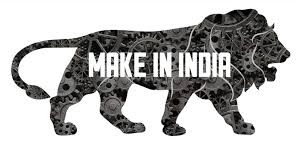 Another point of emphasis in our negotiations with foreign suppliers is localisation of manufacturing of key components that will not only bring the cost down, but will is in accord with our `Make in India’ campaign.
Another point of emphasis in our negotiations with foreign suppliers is localisation of manufacturing of key components that will not only bring the cost down, but will is in accord with our `Make in India’ campaign.
MYTH 2: There is no advantage in buying foreign-built reactors
Most of our nuclear power plants are indigenously built which shows that we are not constrained by capability. But we do have capacity constraints where foreign collaboration becomes important for us. Foreign collaboration in nuclear power is important to scale up the installed capacity of nuclear power in India for following reasons:
- Foreign collaboration in nuclear power comes with assured supply of uranium, of which India currently has a deficit.
- The uninterrupted supply of uranium is in the interest of our own future expansion of civil nuclear energy, including our three-stage programme, by leading the way for building larger fleet of Fast Breeder Reactors and eventually utilization of our abundant domestic Thorium resources.
Foreign collaboration will not only help us step up our nuclear power capacity, but over years, will also help in building an industrial ecosystem in India based on commercial Light Water Reactor (LWR) technology through manufacturing and technological capacities created in India, that can place India as part of global supply chain for LWR reactors. The collateral benefits, and spin-off effects for Micro, Small and Medium Enterprise (MSME) sector, in terms of impetus to Government’s ‘Make in India’ initiative and potential for India’s emergence as a hub for cutting-edge nuclear manufacturing and skilled manpower, make the case for large-scale nuclear power augmentation even more compelling.
MYTH 3: Nuclear power’s role in addressing climate change is overrated
 Nuclear power is a clean energy resource. Studies indicate that every unit of nuclear power replacing coal-based power saves 1 kg of CO2 emissions. In 2015-16, India generated 37,456 million units of nuclear energy, which means saving over 37 million tonnes of CO2 in a single year! In fact, the average life cycle greenhouse gas emission for a nuclear power plant is among the lowest of almost all energy resources.
Nuclear power is a clean energy resource. Studies indicate that every unit of nuclear power replacing coal-based power saves 1 kg of CO2 emissions. In 2015-16, India generated 37,456 million units of nuclear energy, which means saving over 37 million tonnes of CO2 in a single year! In fact, the average life cycle greenhouse gas emission for a nuclear power plant is among the lowest of almost all energy resources.
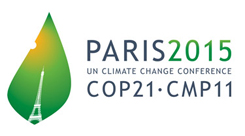 India’s voluntary commitment at COP-21 under the Intended Nationally Determined Contributions (INDC) calls for reducing the emissions intensity of India’s GDP by 33-35 percent by 2030 from 2005 level and raising the share of non-fossil fuel based energy resources in the total energy mix to 40 percent from the current level of around 13 percent.
India’s voluntary commitment at COP-21 under the Intended Nationally Determined Contributions (INDC) calls for reducing the emissions intensity of India’s GDP by 33-35 percent by 2030 from 2005 level and raising the share of non-fossil fuel based energy resources in the total energy mix to 40 percent from the current level of around 13 percent.
 Given India’s large energy needs, these commitments render nuclear power to be one of the few credible and sustainable non-fossil energy resources with the least carbon footprint that can meet the robust base load demands to drive India’s future industrialisation and growth. We are, therefore, convinced that for an energy-starved country like India, nuclear power offers a reliable and environmentally-sensitive answer to climate change.
Given India’s large energy needs, these commitments render nuclear power to be one of the few credible and sustainable non-fossil energy resources with the least carbon footprint that can meet the robust base load demands to drive India’s future industrialisation and growth. We are, therefore, convinced that for an energy-starved country like India, nuclear power offers a reliable and environmentally-sensitive answer to climate change.
MYTH 4: Better try other renewable resources than nuclear power
 For India, the option is not really whether to choose one kind of energy resource to the exclusion of others. Our energy demands are large and we need to pursue all options that become technologically available to us and can be scaled up in a cost effective manner. Each type of energy resource suits a particular type of demand. Nuclear power is a base-load power resource suited for large and sustained industrial-scale energy consumption, just as renewables offer an excellent choice for off-grid energy solutions.
For India, the option is not really whether to choose one kind of energy resource to the exclusion of others. Our energy demands are large and we need to pursue all options that become technologically available to us and can be scaled up in a cost effective manner. Each type of energy resource suits a particular type of demand. Nuclear power is a base-load power resource suited for large and sustained industrial-scale energy consumption, just as renewables offer an excellent choice for off-grid energy solutions.
 It is a misplaced debate in India’s context whether we should have nuclear or solar or wind or any other resource. It is not an ‘either-or’ choice. We need all of them. The ‘either-or’ debate may suit the situation in rich countries whose energy demands have been long satisfied and who are looking to replace one type of energy with another, depending on pressure from local interest groups and the expediency of their domestic politics. This debate is not for India.
It is a misplaced debate in India’s context whether we should have nuclear or solar or wind or any other resource. It is not an ‘either-or’ choice. We need all of them. The ‘either-or’ debate may suit the situation in rich countries whose energy demands have been long satisfied and who are looking to replace one type of energy with another, depending on pressure from local interest groups and the expediency of their domestic politics. This debate is not for India.
Within the assumption that we need nuclear power to coexist with all other possible energy resources, there is need to recognise that nuclear power offers some significant climate and cost advantages even over renewables, considering the high capacity factors and exceptionally long life of nuclear power plants (60 years and more for new generation plants) and their low carbon footprint. For example, the average life cycle greenhouse gas emission for a nuclear power plant is almost 1/4th of that of a solar power plant. For the same installed capacity, the actual electricity generation from a nuclear plant is more than three times that of a solar plant. Even in terms of land requirement, a nuclear power plant, with its high energy density, takes up as much as 20 times less land area as that required for a solar plant of the same installed capacity. In terms of amount of electricity generated, the cost of nuclear power actually turns out to be less per unit installed capacity than the solar power. View (227KB) for an illustrative comparison
MYTH 5: Nuclear Power is unsafe
 Is nuclear power safe? This is like asking – ‘Is air travel safe?’ With increasing complexities of technology and the associated risks, there is an ever increasing attention to make these technologies safer. So, aircraft technology has evolved today to a point where we have enough confidence that it is safe to fly long distances. The same is true for nuclear power. It is one of the few technologies, which because of large stakes involved, has huge redundancies built into it to ensure its safe operation, even if it means an appreciable increase in the cost of the technology. It is unfair to blame nuclear power as perennially unsafe by citing the three accidents that have globally happened in the entire history of nuclear power plant operation.
Is nuclear power safe? This is like asking – ‘Is air travel safe?’ With increasing complexities of technology and the associated risks, there is an ever increasing attention to make these technologies safer. So, aircraft technology has evolved today to a point where we have enough confidence that it is safe to fly long distances. The same is true for nuclear power. It is one of the few technologies, which because of large stakes involved, has huge redundancies built into it to ensure its safe operation, even if it means an appreciable increase in the cost of the technology. It is unfair to blame nuclear power as perennially unsafe by citing the three accidents that have globally happened in the entire history of nuclear power plant operation.
 Today, nuclear power is a reliable and safe energy option. With newer safety features, constant technological advancements and a more robust regulatory oversight, nuclear power is only going to be safer in the future, including in India, where thanks to the diligence of our scientists and engineers, we have a commendable record of operating our nuclear fleet for over 40 years without any serious incident.
Today, nuclear power is a reliable and safe energy option. With newer safety features, constant technological advancements and a more robust regulatory oversight, nuclear power is only going to be safer in the future, including in India, where thanks to the diligence of our scientists and engineers, we have a commendable record of operating our nuclear fleet for over 40 years without any serious incident.
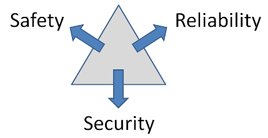 Even for foreign-built reactors, soundness and safety of imported technology remains a critical consideration. Before any project is approved, our nuclear regulatory authorities follow a rigorous assessment mechanism to ascertain the safety and reliability of the technology being offered by foreign vendors. There will be no exception to this rule.
Even for foreign-built reactors, soundness and safety of imported technology remains a critical consideration. Before any project is approved, our nuclear regulatory authorities follow a rigorous assessment mechanism to ascertain the safety and reliability of the technology being offered by foreign vendors. There will be no exception to this rule.
MYTH 6: Nuclear power generates large volume of wastes
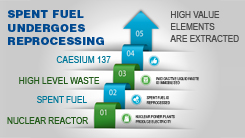 Not in India. The quantity of waste from nuclear power plants in India is much smaller due to our adoption of the closed fuel cycle. Our three-stage nuclear power programme follows the philosophy of “reprocess to reuse”, where the spent fuel of one stage becomes the feeder fuel for the next stage. We, therefore, treat our spent fuel not as waste, but as wealth.
Not in India. The quantity of waste from nuclear power plants in India is much smaller due to our adoption of the closed fuel cycle. Our three-stage nuclear power programme follows the philosophy of “reprocess to reuse”, where the spent fuel of one stage becomes the feeder fuel for the next stage. We, therefore, treat our spent fuel not as waste, but as wealth.
 Given India’s large energy needs, these commitments render nuclear power to be one of the few credible and sustainable non-fossil energy resources with the least carbon footprint that can meet the robust base load demands to drive India’s future industrialisation and growth. We are, therefore, convinced that for an energy-starved country like India, nuclear power offers a reliable and environmentally-sensitive answer to climate change.
Given India’s large energy needs, these commitments render nuclear power to be one of the few credible and sustainable non-fossil energy resources with the least carbon footprint that can meet the robust base load demands to drive India’s future industrialisation and growth. We are, therefore, convinced that for an energy-starved country like India, nuclear power offers a reliable and environmentally-sensitive answer to climate change.
 The technological advancements made by our scientists are gradually turning whatever little waste remains in the spent fuel into further useful applications. For example, Ceasium-137, a useful isotope, is being recovered in India from the high level waste arising from reprocessing of spent fuel of PHWR reactors. These caesium pencils are now being used by our hospitals and blood banks as blood irradiator to ensure safe blood transfusion.
The technological advancements made by our scientists are gradually turning whatever little waste remains in the spent fuel into further useful applications. For example, Ceasium-137, a useful isotope, is being recovered in India from the high level waste arising from reprocessing of spent fuel of PHWR reactors. These caesium pencils are now being used by our hospitals and blood banks as blood irradiator to ensure safe blood transfusion.


